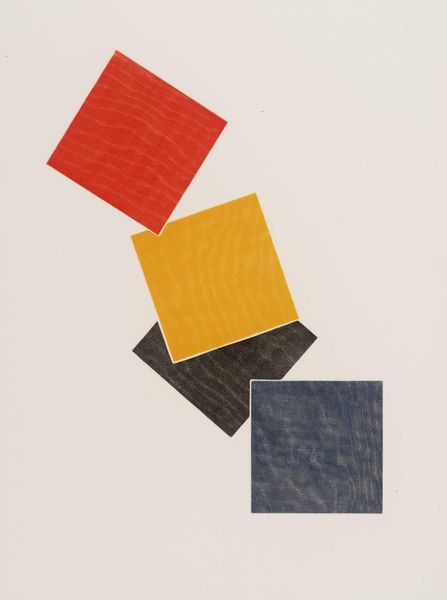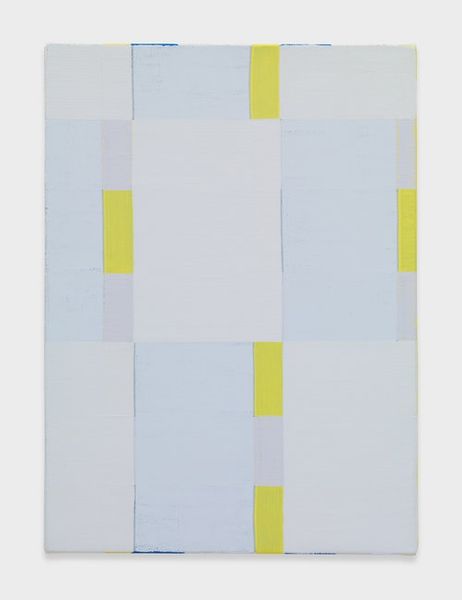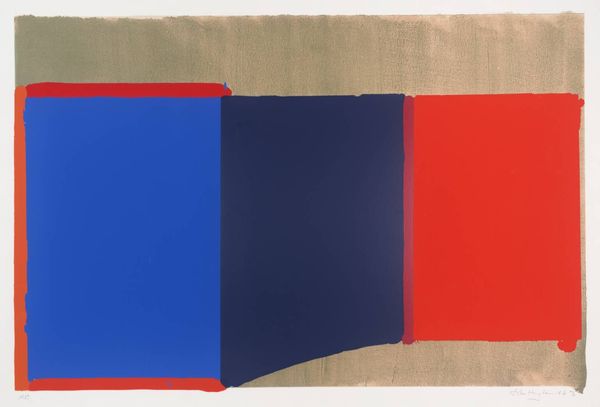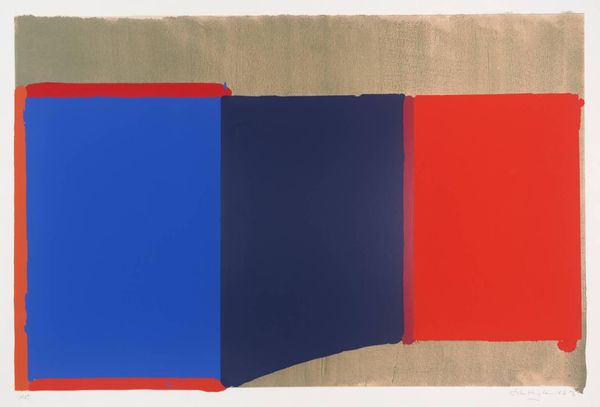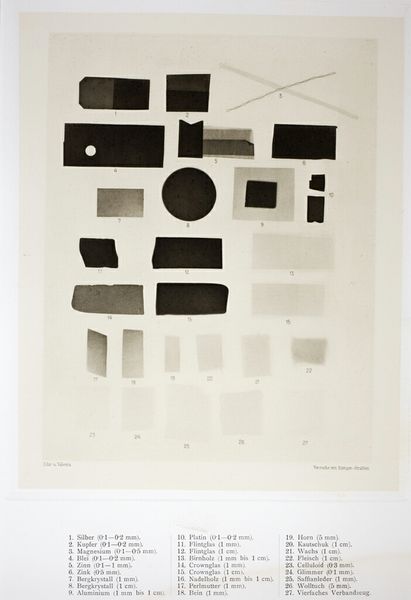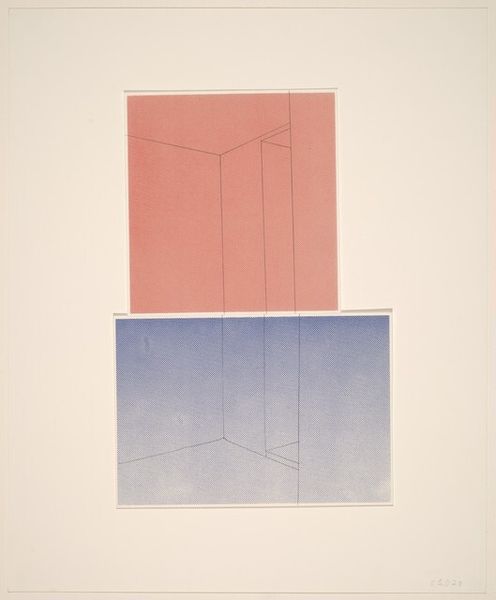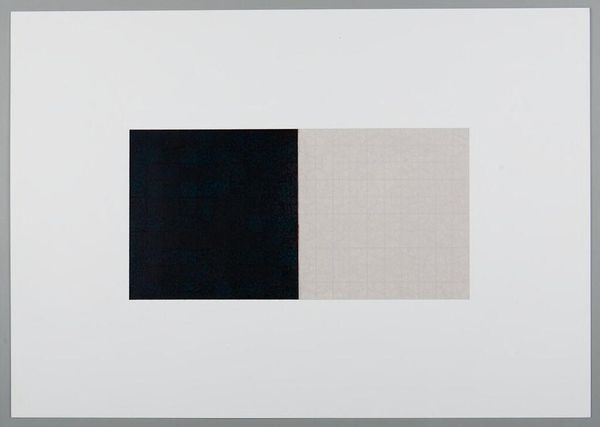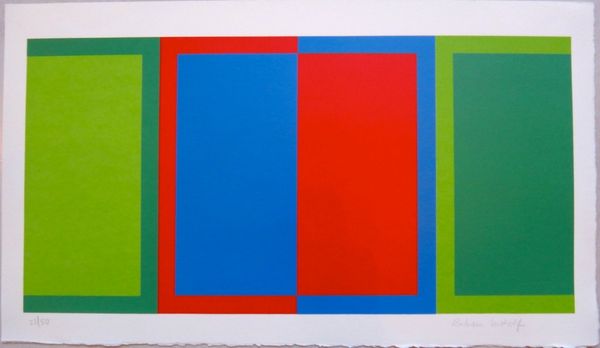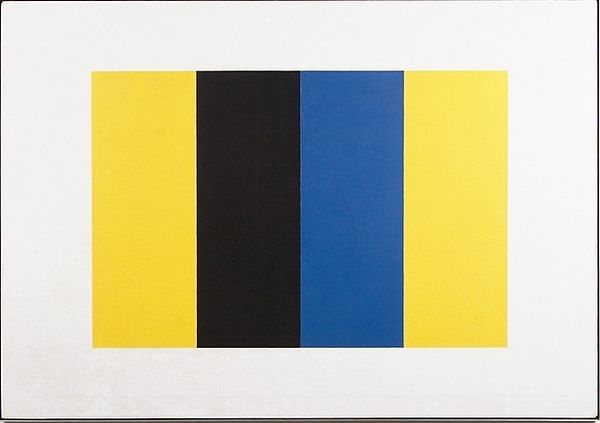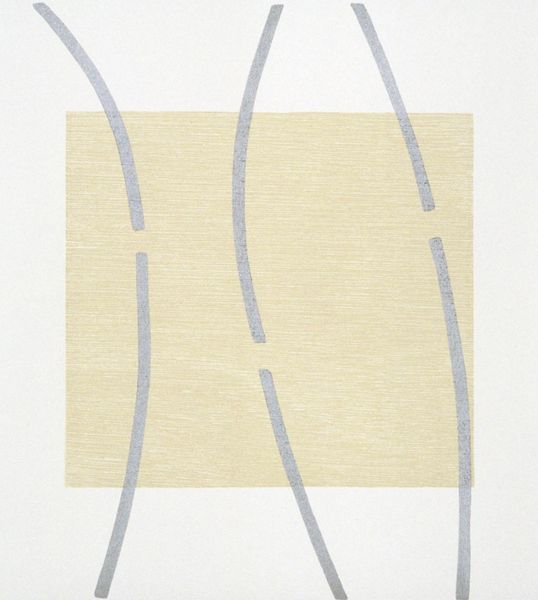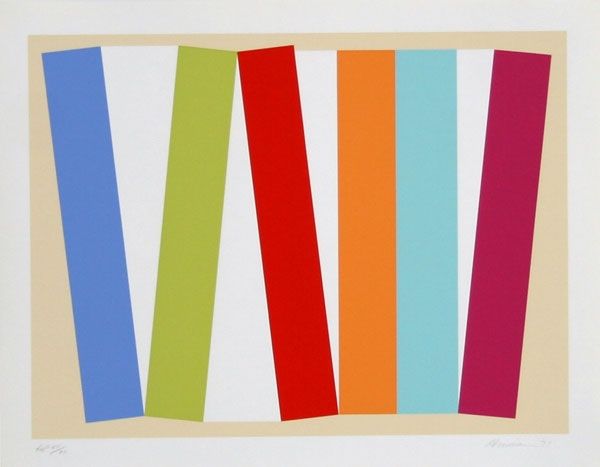
painting, acrylic-paint
#
painting
#
minimalism
#
acrylic-paint
#
form
#
rectangle
#
geometric
#
abstraction
#
modernism
#
hard-edge-painting
#
orange
Copyright: Robert Mangold,Fair Use
Curator: Welcome. Today, we're looking at Robert Mangold’s “Series of Three,” an acrylic on canvas painting from 1984. Editor: It’s…unassuming, almost quiet. Three rectangles, each a different color and each seemingly incomplete. I notice the varying palettes; ochre-red, slate blue, pale yellow. Curator: Yes, Mangold's work consistently investigated simple geometric forms, aiming to explore the boundaries between painting and architecture within the minimalist movement. He focused less on grand narratives, and more on color and surface tension and their presence. Editor: Thinking about the "how" of it all - you've got to appreciate the care, but the industrial feel of the paint application clashes a bit. These planes are clearly defined. No texture. What do you think the significance of the drawing in it is? Curator: In a way, it draws a viewer's focus on line and shape – the thin graphite arcs and intersecting planes enhance the material presence and physical interaction with the surface, playing with positive and negative space. Editor: Interesting to consider what kind of labor and machinery produced that exactness – there's no human error that you'd associate with other media or paintings with visible brushwork. Curator: Absolutely, Robert Mangold had a keen eye for form and color, and often questioned traditional boundaries to explore how artwork functions within its environment. Editor: Looking at the composition – the hard lines of the rectangles in conversation with soft lines is captivating. Though on its own it seems very simple and unfulfilling – considering its placement as part of a wider minimalist trend that values process and method gives a little more meaning. Curator: Ultimately, “Series of Three” encourages us to reflect on our perceptions. What are the formal and conceptual frameworks influencing not only what the artist has presented, but the broader contexts that have produced it? Editor: Indeed. It shows how materials shaped by labor and production techniques create something evocative from a purely objective approach to minimalist artistry. Curator: Thanks for that fascinating perspective. Editor: Anytime. It's been illuminating as always.
Comments
No comments
Be the first to comment and join the conversation on the ultimate creative platform.
